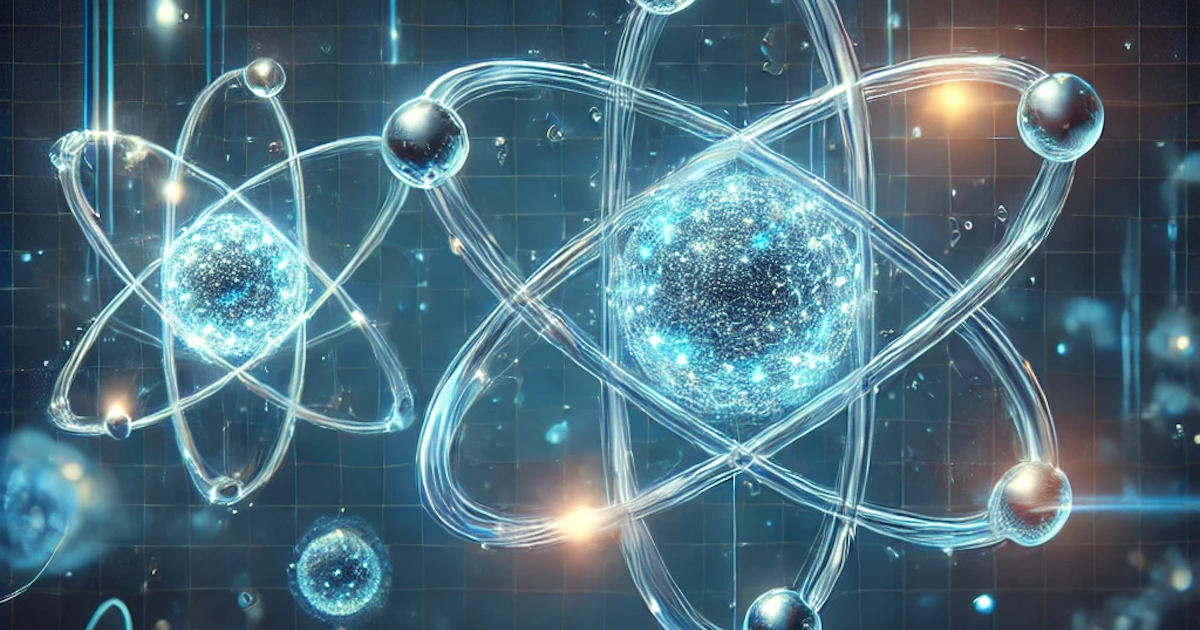Mass and Energy, Particles and Waves
Explore the mass-energy equivalence principle of relativity theory and calculate the energy of moving electrons considering relativistic effects.
Mass-Energy Equivalence Principle
Mass and energy are identical and can be converted into each other.
\[E=mc^2\]Here, $c$ is the speed of light, $2.9979 \times 10^{10}\ \text{cm/sec}$.
Electron Volt (eV)
Electron volt (eV): The kinetic energy gained by an electron passing through a potential difference of 1 volt
\[\begin{align*} 1 \text{eV} &= 1.60219 \times 10^{-19}\ \text{C}\cdot \text{V} \\ &= 1.60219 \times 10^{-19}\ \text{J} \end{align*}\]Mass and Energy of Moving Objects
According to the theory of relativity, the mass of a moving object increases relative to an observer, and the equation for the speed and mass of a moving object is defined as follows:
\[m=\frac {m_0}{\sqrt{1-v^2/c^2}} \tag{1}\]$m_0$: rest mass, $v$: velocity
The total energy of a particle is the sum of its rest-mass energy and kinetic energy, so the following holds:
\[E_{\text{total}} = E_{\text{rest}}+E_{\text{kinetic}} = mc^2\] \[\begin{align*} E_{\text{kinetic}} &= E_{\text{total}}-E_{\text{rest}} \\ &= mc^2 - m_0c^2 \\ &= m_0c^2\left[\frac {1}{\sqrt{1-v^2/c^2}} - 1\right] \tag{2} \end{align*}\]Especially, when $v\ll c$, using binomial expansion for approximation:
\[\begin{align*} E_{kinetic} &= m_0c^2\left[\frac {1}{\sqrt{1-v^2/c^2}} - 1\right] \\ &= m_0c^2\left[\left(1+\frac{1}{2}v^2/c^2\right)-1\right] \\ &= \frac {1}{2}m_0v^2 \tag{3} \end{align*}\]This becomes the same as the kinetic energy formula in classical mechanics. In practice, when $v\leq 0.2c$ or $E_{\text{kinetic}} \leq 0.02E_{\text{rest}}$, it can be considered as $v\ll c$, and using this approximation (i.e., ignoring the effects of relativity theory) gives sufficiently accurate values.
Electrons
Since the rest-mass energy of an electron is $E_{\text{rest}}=m_ec^2=0.511 \text{MeV}$, the relativistic kinetic energy formula should be applied when the kinetic energy of an electron exceeds $0.02\times 0.511 \text{MeV}=0.010 \text{MeV}=10 \text{keV}$. In nuclear engineering, the energy of electrons is often greater than 10keV, so equation (2) should be applied in most cases.
Neutrons
The rest-mass energy of a neutron is approximately 1000MeV, so $0.02E_{rest}=20\text{MeV}$. In nuclear engineering, it is rare to deal with situations where the kinetic energy of neutrons exceeds 20MeV, so equation (3) is usually used to calculate the kinetic energy of neutrons.
Photons
Equations (2) and (3) are valid only when the rest mass is not zero, so they cannot be applied to photons with zero rest mass. The total energy of a photon is calculated using the following equation:
\[E = h\nu \tag{4}\]$h$: Planck’s constant ($4.316 \times 10^{-15} \text{eV}\cdot\text{s}$), $\nu$: frequency of the electromagnetic wave
Matter Waves
All matter in nature is both a particle and a wave simultaneously. In other words, all particles have a corresponding wavelength (de Broglie wavelength). The wavelength $\lambda$ is a function of momentum $p$ and Planck’s constant $h$.
\[\lambda = \frac {h}{p} \tag{5}\]Also, momentum $p$ is defined by the following equation:
\[p = mv \tag{6}\]Ignoring Relativistic Effects (e.g., Neutrons)
Since kinetic energy $E=1/2 mv^2$, expressing equation (6) as a function of energy gives:
\[p=\sqrt{2mE} \tag{7}\]Substituting this into equation (5), the wavelength of the particle becomes:
\[\lambda = \frac {h}{\sqrt{2mE}} \tag{8}\]This equation is applied when calculating the de Broglie wavelength of neutrons in nuclear engineering. Substituting the rest mass of a neutron gives:
\[\lambda = \frac {2.860 \times 10^{-9}}{\sqrt{E}} \tag{9}\]Here, the unit of $\lambda$ is cm, and $E$ is the kinetic energy of the neutron expressed in eV.
Considering Relativistic Effects (e.g., Electrons)
Directly solve the previous relativity equations to calculate momentum $p$.
\[p=\frac {1}{c} \sqrt{E^2_{total}-E^2_{rest}} \tag{10}\]Then the de Broglie wavelength is:
\[\lambda = \frac {hc}{\sqrt{E_{total}-E_{rest}}} \tag{11}\]Particles with Zero Rest Mass (e.g., Photons)
For particles with zero rest mass, momentum cannot be calculated using equation (6), so it is expressed as:
\[p=\frac {E}{c} \tag{12}\]Substituting equation (12) into equation (5) gives:
\[\lambda = \frac {hc}{E} \tag{13}\]Substituting the values of $h$ and $c$, the final equation for wavelength is:
\[\lambda = \frac {1.240 \times 10^{-6}}{E} \tag{14}\]Here, the unit of $\lambda$ is m, and the unit of $E$ is eV.
